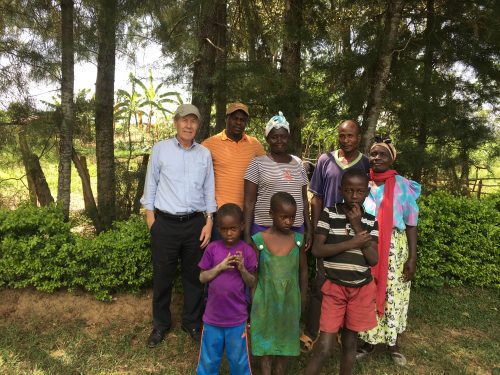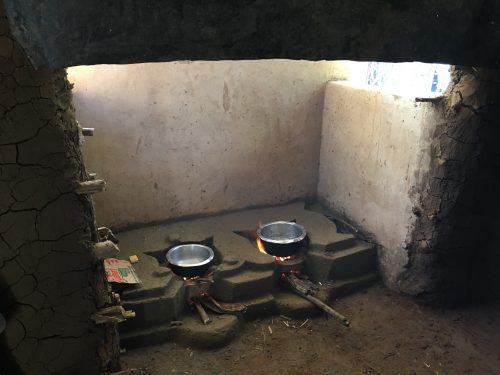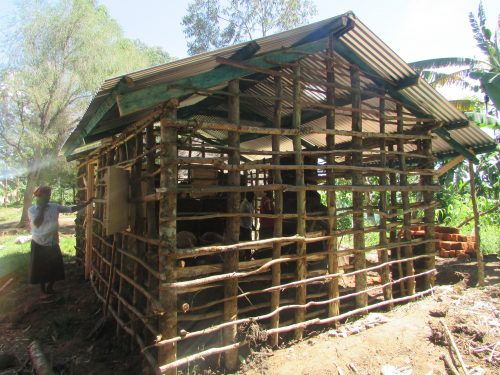Uwe Reischl, a professor in the Department of Community and Environmental Health in the College of Health Sciences, recently conducted a project in Bukhaywa, Kenya, to evaluate a new architectural ventilation design concept developed at Boise State.

The design reduces harmful indoor smoke accumulation generated by open fires in rural kitchens. Kenya’s rural population relies primarily on indoor open fires for cooking. Fuels such as firewood, charcoal, agricultural waste products and animal dung create toxic smoke that lead to chronic respiratory health problems primarily for women and children. It is estimated that more than 600,000 women worldwide die prematurely each year from illnesses caused by such exposures. Past efforts to address this problem focused on the distribution of new stove technologies. However, this approach has had minimal impact because poor families cannot afford the stoves.

An interior photo of the kitchen concept.
Using a different approach altogether, a low-cost kitchen ventilation concept was developed that can now reduce smoke build-up in rural kitchens. The design feature allows families to continue using their traditional open fires while experiencing a reduction in smoke build-up by 80 percent. To evaluate the new application under actual conditions, Reischl built a full-scale prototype kitchen in Bukhaywa and evaluated the performance.
Use of the prototype kitchen by a rural family showed that healthful indoor air quality conditions can now be achieved without requiring new technologies. Reischl believes that the design application will not only be able to reduce the overall health burden imposed on poor rural women and their children in Kenya, but can also improve the indoor air quality conditions of families in other parts of the world.

The “Boise State kitchen” under construction in Kenya using local construction techniques.